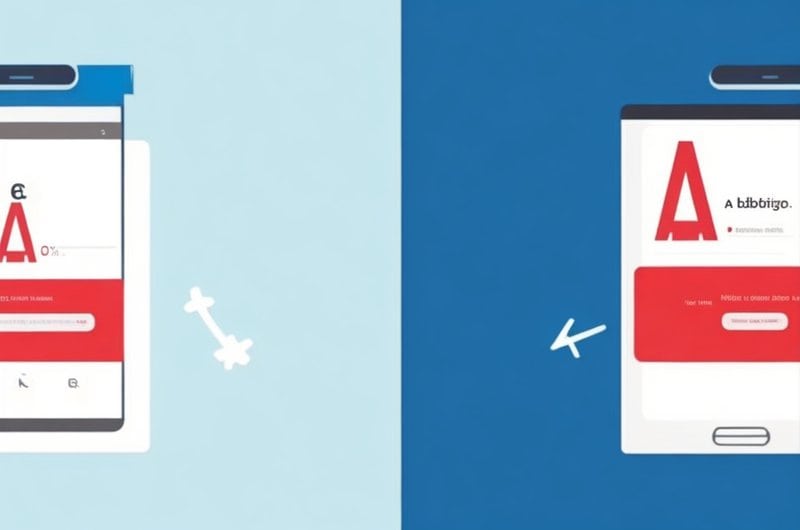What Is the Role of A/B Testing in Email Marketing

In the ever-evolving world of email marketing, success hinges on the ability to capture and hold the attention of your audience.
Enter A/B testing, a powerful tool that allows marketers to refine and optimize their email campaigns.
Like a compass guiding a ship through uncharted waters, A/B testing provides valuable insights and data-driven decisions, leading to increased conversions and improved campaign performance.
Unlock the potential of A/B testing and watch as your email marketing efforts set sail towards success.
Key Takeaways
- A/B testing in email marketing optimizes subject lines for higher open rates and tailors them based on data and metrics.
- A/B testing allows for experimentation and finding effective subject lines, leading to increased open and conversion rates.
- It is essential for optimizing email marketing campaigns and provides valuable data and insights to improve campaign performance.
- Conducting A/B tests at regular intervals, comparing different versions of emails, and gathering insights into audience preferences empower marketers to make informed decisions and improve email campaigns.
The Benefits of A/B Testing in Email Marketing
One of the key benefits of A/B testing in email marketing is the ability to optimize email subject lines for higher open rates. A well-crafted subject line has the power to entice recipients and make them curious enough to open the email. A/B testing allows marketers to test different subject lines to determine which one performs better.
By analyzing data and metrics, marketers can gain valuable insights into what resonates with their audience and tailor their subject lines accordingly. This data-driven approach ensures that the subject lines are persuasive and engaging, leading to increased open rates and ultimately higher conversion rates.
A/B testing provides freedom for marketers to experiment and find the most effective subject lines, allowing them to maximize the impact of their email marketing campaigns.
Key Elements to Test in Email Campaigns
The key elements to test in email campaigns include the subject line, email body content, call-to-action buttons, and send time. A successful email campaign depends on capturing the attention of the recipients and compelling them to take action.
A/B testing allows marketers to experiment with different variations of these elements to determine which combination yields the best results. By analyzing data and metrics such as open rates, click-through rates, and conversion rates, marketers can make informed decisions about the most effective approaches to engage and convert their audience.
Testing subject lines is crucial as it is the first thing recipients see and can greatly impact open rates. Email body content should be tested to optimize messaging, format, and length. Call-to-action buttons should be tested to determine the most persuasive wording, color, and placement. Lastly, send time should be tested to identify the optimal time when recipients are most likely to engage with the email.
How A/B Testing Improves Conversion Rates
A/B testing allows marketers to compare different versions of an email or webpage and determine which variation achieves higher conversion rates. This method is essential for optimizing email marketing campaigns and increasing the effectiveness of customer engagement. By conducting A/B testing, marketers can gather valuable data and insights that can inform their decision-making process and improve campaign performance.
Here are five reasons why A/B testing is crucial in improving conversion rates:
- Identifies the most effective subject lines and email content.
- Helps in optimizing call-to-action buttons for higher click-through rates.
- Allows for testing different design elements to enhance visual appeal.
- Enables testing of different email send times for better response rates.
- Provides insights into personalization techniques that resonate with the target audience.
Best Practices for Conducting A/B Tests in Email Marketing
In order to ensure accurate results, it is important to carefully plan and execute A/B tests at regular intervals during email marketing campaigns. A/B testing allows marketers to compare two versions of an email to determine which one performs better in terms of open rates, click-through rates, and ultimately, conversions.
By systematically testing different elements such as subject lines, call-to-action buttons, or even the overall design, marketers can gather valuable insights into what resonates best with their audience.
The data-driven approach of A/B testing empowers marketers to make informed decisions and optimize their email campaigns for maximum effectiveness. It provides the freedom to experiment, iterate, and improve, ensuring that each email sent is more likely to engage recipients and drive the desired results.
Leveraging A/B Test Results to Optimize Email Campaigns
By analyzing and applying the insights gained from A/B test results, marketers can strategically refine their email campaigns and achieve higher engagement rates. A/B testing is a valuable tool that allows marketers to compare different versions of an email and measure their performance. By leveraging A/B test results, marketers can make data-driven decisions to optimize their email campaigns and increase their chances of success.
Here are five ways in which marketers can use A/B test results to optimize their email campaigns:
- Test different subject lines to find the most compelling one.
- Experiment with different email designs to see which layout and format resonate best with the audience.
- Test different call-to-action buttons to determine which one drives more click-throughs.
- Try different send times to identify the most optimal time for maximum engagement.
- Test personalized content versus generic content to see if personalization leads to higher engagement.
Frequently Asked Questions
How Can A/B Testing Be Used to Improve Email Deliverability?
A/B testing can be used to improve email deliverability by allowing marketers to experiment with different elements, such as subject lines, content, and sender names, and determine which combination resonates best with their audience, ultimately leading to higher open and click-through rates.
What Are Some Common Mistakes to Avoid When Conducting A/B Tests in Email Marketing?
When conducting A/B tests in email marketing, it is crucial to avoid common mistakes. By carefully planning test parameters, ensuring sample size is statistically significant, and analyzing results accurately, marketers can make data-driven decisions to optimize email performance and drive better engagement and conversions.
How Can A/B Testing Help Optimize Email Subject Lines?
A/B testing plays a crucial role in optimizing email subject lines. By testing different variations, marketers can gather data on what resonates best with their audience, leading to improved open rates and engagement.
What Are Some Effective Ways to Segment Email Subscribers for A/B Testing Purposes?
Segmenting email subscribers for A/B testing purposes is crucial for effective email marketing. By dividing subscribers based on demographics, behavior, or preferences, marketers can tailor their messages to specific groups, maximizing engagement and conversion rates.
Are There Any Tools or Software That Can Help Streamline the A/B Testing Process in Email Marketing?
Yes, there are several tools and software available that can streamline the A/B testing process in email marketing. These tools offer features such as automated testing, data analysis, and segmentation, helping businesses optimize their email campaigns and improve their conversion rates.






